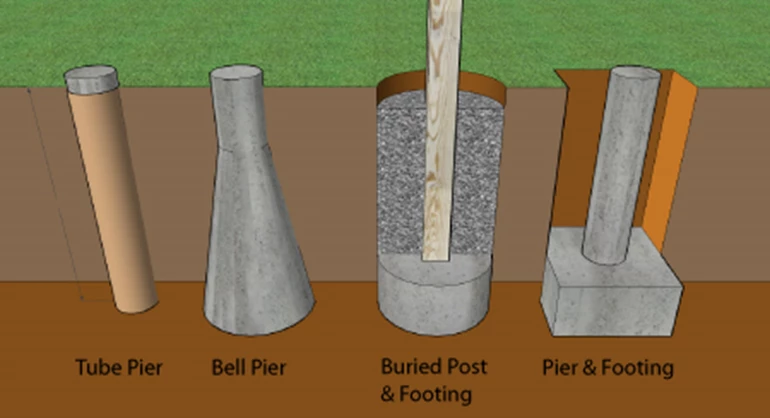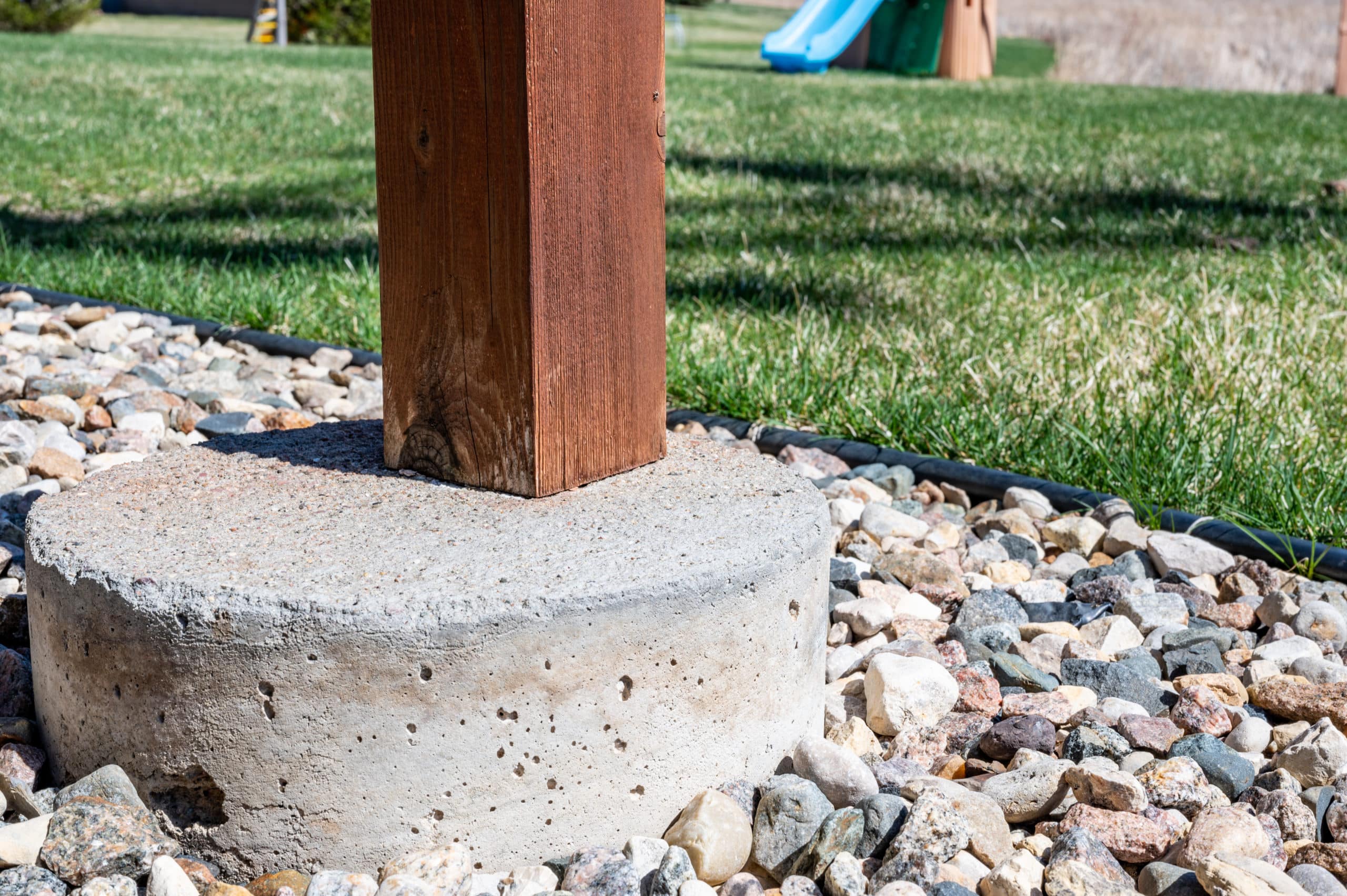Guarantee Security and Longevity With Effectively Set Up Deck Grounds
Deck footings may not be the most attractive facet of deck construction, but they play a crucial duty in ensuring stability and durability. In this conversation, we will certainly discover the importance of proper deck footings, elements to think about throughout installment, different kinds of footings available, step-by-step installation guide, and upkeep tips for ensuring long-lasting footings.

Value of Appropriate Deck Grounds
Why are properly installed deck footings important for the security and long life of your deck? Deck grounds are the structure on which the deck relaxes, moving the load from the deck to the ground.
First of all, effectively installed deck footings distribute the weight of the deck evenly, stopping any type of irregular settling or sinking. This is particularly crucial in locations with unstable soil, as it helps to mitigate the danger of the deck collapsing or moving. In addition, well-installed footings make sure that the deck continues to be level, avoiding any structural damages that can occur when a deck becomes uneven.
Second of all, effectively mounted footings provide a strong anchor for the deck, avoiding excessive motion and sway. This aids to preserve the structural honesty of the deck, lowering the danger of accidents or injuries. It additionally lessens the wear and tear on the deck, permitting it to hold up against the components and routine use for a longer amount of time.
Aspects to Consider for Deck Ground Setup
When mounting deck grounds, there are a number of crucial aspects to take into consideration for correct installment. Various dirt kinds have various load-bearing capabilities, so it is critical to perform a dirt examination to make certain the grounds can sustain the weight of the deck and its passengers. By taking into account these factors, you can ensure the correct installment of deck grounds and take pleasure in a durable and steady deck.
Kinds Of Deck Footings to Choose From
There are several various sorts of deck grounds offered for you to select from. Each type has its very own advantages and disadvantages, so it's essential to consider your specific requirements and the conditions of your deck before choosing.
One typical kind of deck ground is the concrete footing. This involves digging holes in the ground and putting concrete right into them to produce a solid structure. Concrete grounds are long lasting and offer outstanding security, making them ideal for decks in areas with challenging dirt problems or high wind tons.
Another alternative is the helical pier ground, which is composed of a steel shaft with helical plates that are screwed into the ground. These grounds fast to set up and can be utilized in different soil types, including sandy or clay dirts. They are additionally flexible, enabling simple leveling of the deck.
Sonotube footings are another popular choice. These footings are developed by placing a cardboard tube in an opening and loading it with concrete. Sonotube grounds are reasonably very easy to set up and supply appropriate security for smaller sized decks or in locations with much less requiring dirt problems.

When selecting the kind of deck footing, it's vital to take into consideration variables such as dirt problems, deck dimension and weight, regional building codes, and personal preferences. By selecting the appropriate ground kind, you can make certain the security and long life of your deck.
Step-by-Step Overview for Setting Up Deck Footings

Determine the place: Start by marking the specific placement of each ground using stakes and string (Deck Footings). Consider any local building ordinance or laws concerning trouble distances
Dig the holes: Utilize a blog post hole digger or an auger to dig the holes for the grounds. The deepness will certainly depend on the frost line in your area and the sort of dirt. Usually, a depth of a minimum of 36 inches is suggested for stability.
Degree the openings: Ensure that all-time lows of the holes are level (Deck Footings). This can be accomplished by utilizing a degree or a straight board throughout the top of the openings
Include gravel: Place a layer of gravel at the base of each opening to enhance water drainage and protect against the footing from penetrating the soil gradually.
Put the ground forms: Insert the footing forms into the openings, guaranteeing they are focused and degree. Usage stakes to protect them in position.
Mix and Home Page pour concrete: Comply with the guidelines on the concrete mix bag to prepare the concrete. Put the concrete into the footing forms, filling them completely.
Smooth the surface: Use a trowel to smooth the surface of the concrete and remove any type of air pockets. Enable the concrete to heal according to the manufacturer's instructions.
Maintenance Tips for Long-lasting Deck Footings
Appropriate upkeep is essential for guaranteeing the durability and security of deck grounds. By consistently evaluating and keeping your deck grounds, you can protect against damages and possible security risks. One important facet of upkeep is to frequently check for any kind of indications of wear and tear, such as cracks or activity in the grounds. It is essential to address them immediately to avoid additional damage. if you observe any kind of problems.
Routine cleansing is also crucial for preserving deck grounds. Dirt, particles, and vegetation can collect around the footings, which can result in moisture build-up and decay. Cleansing the footings on a regular basis, using a brush or a stress washer, can aid avoid these concerns and extend the life expectancy of your deck.
In addition to cleansing, it is very important to maintain the location around the footings free from any type of blockages. Avoid stacking things against the footings or enabling plants to expand as this article well close to them. These blockages can trap dampness and cause the grounds to weaken over time.
Last but not least, normal resealing of the footings is recommended to secure them from dampness and other environmental elements. Applying a water-proof sealer can help avoid water damages and expand the life expectancy of the grounds.
Verdict
Finally, correct installation of deck grounds is critical for making sure stability and longevity of your deck. Variables such as soil type, load capacity, and local structure codes require to be considered when picking the appropriate sort of deck footings. Following a detailed guide for installation and normal maintenance will certainly assist to make certain the footings remain durable and sturdy.
In this discussion, we will discover the value of appropriate deck footings, variables to think about during installment, different kinds of footings readily available, step-by-step installation overview, and maintenance pointers for making sure lasting grounds. Deck footings are the structure on which the deck YOURURL.com rests, moving the tons from the deck to the ground.One common kind of deck footing is the concrete ground. Insert the ground forms: Put the footing creates into the openings, ensuring they are focused and level.In final thought, proper setup of deck footings is critical for making sure stability and durability of your deck.